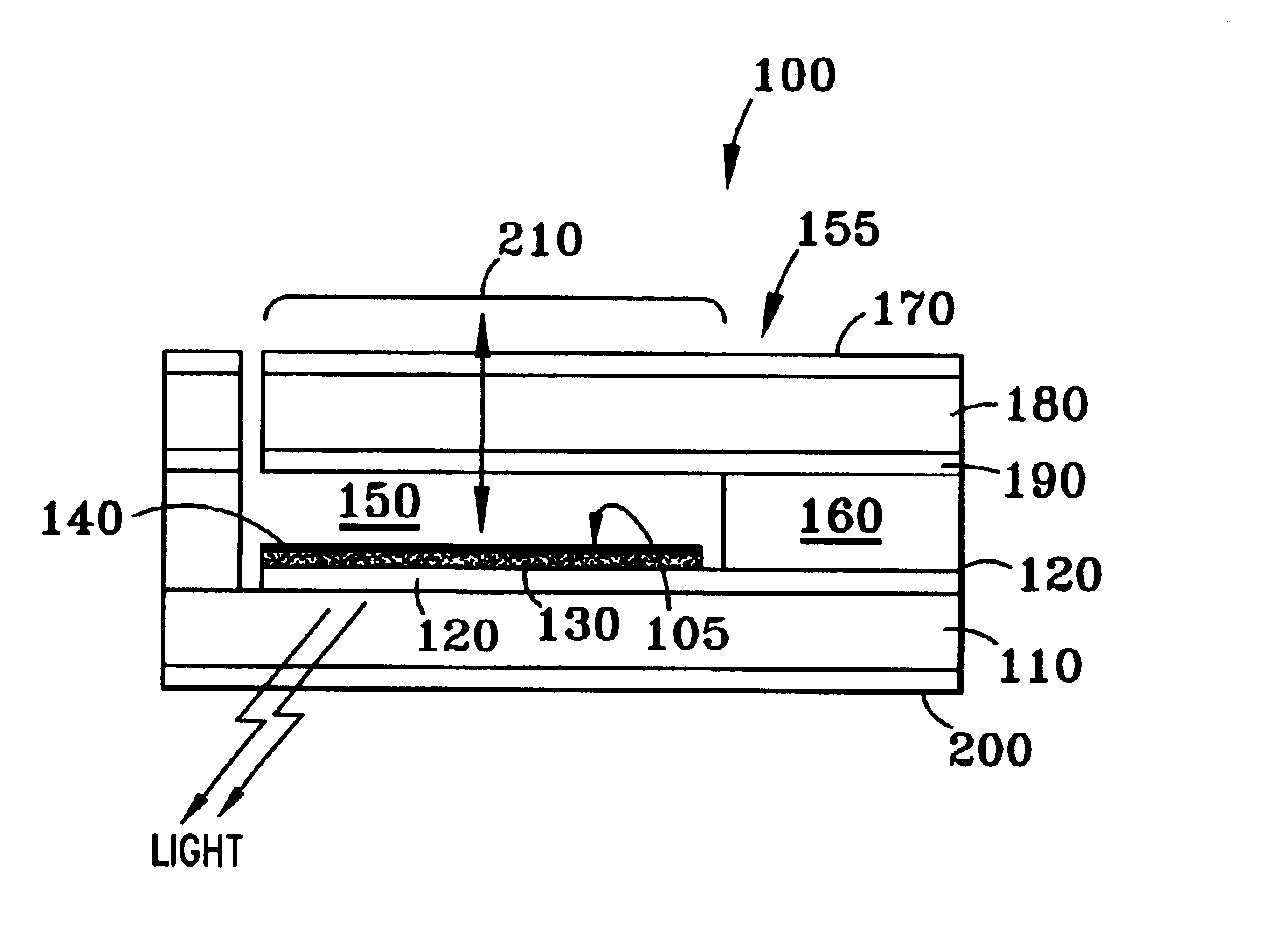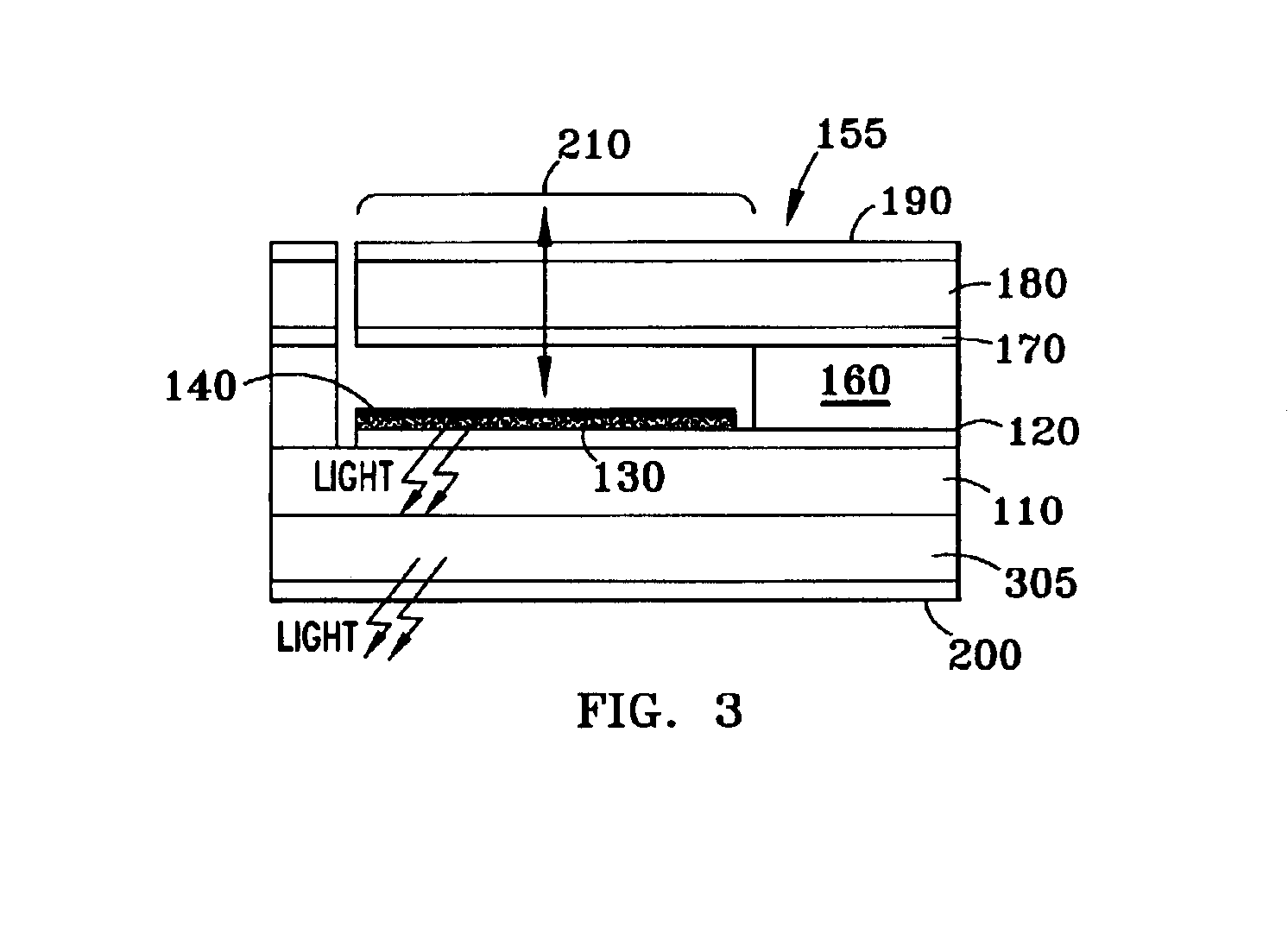Micro electro mechanical system controlled organic LED and pixel arrays and method of using and of manufacturing same
a micro electro mechanical and organic technology, applied in microstructural technology, microstructural devices, discharge tubes/lamp details, etc., can solve the problems of large digital assistants (pdas), portable nature, and display cannot withstand large amounts of mechanical vibration and/or pressur
- Summary
- Abstract
- Description
- Claims
- Application Information
AI Technical Summary
Benefits of technology
Problems solved by technology
Method used
Image
Examples
first embodiment
[0018]the invention is shown in FIG. 1. A light emitting element 100 comprises an OLED and a MEMS. The OLED 105 includes an anode 120, an organic light emitting layer 130, and a cathode 140. The OLED 105 may be formed on a transparent substrate 110, for example. The transparent substrate 110 can be a glass, polymer or other transparent material. If the substrate comprises a polymer, a sealant layer 200 can be provided to protect the OLED from air and moisture absorption through the substrate 110.
[0019]The organic light emitting layer 130 emits light upon application of a voltage across the anode and cathode. The anode and cathode inject charge carriers, i.e. holes and electrons, into the organic light emitting layer 130 where they recombine to form excited molecules or excitons which emit light when the molecules or excitons decay. The color of light emitted by the molecules depends on the energy difference between the excited state and the ground state of the molecules or excitons....
second embodiment
[0031]the invention is illustrated in FIG. 2. The light emitting element 300 comprises a transparent substrate 110, an anode 120, an organic light emitting layer 130, a cathode 140, a cavity 150, a spacer 160, a first conductive layer 170, an actuating member 180, a second conductive layer 190, and an optional sealant layer 200.
[0032]The light emitting element 300 also comprises a MEMS substrate 220, e.g. of polyimide, on which is patterned a contact layer 230 comprising contacts 230A and 230B. Contact 230A, which extends to 205, is connected to one side of the control voltage applied across the OLED. Contact 230B is electrically connected to the cathode 140 of the OLED by means of a connecting member 240. Thus, when the MEMS is activated, the cantilever 210 is forced downward, and the conductive layer 190 touches both contacts 230A and 230B to apply the control voltage across the OLED. The current flows from 205 to 230A to 190 to 230B to 240 to the cathode 140 of the OLED and acros...
PUM
 Login to View More
Login to View More Abstract
Description
Claims
Application Information
 Login to View More
Login to View More - R&D
- Intellectual Property
- Life Sciences
- Materials
- Tech Scout
- Unparalleled Data Quality
- Higher Quality Content
- 60% Fewer Hallucinations
Browse by: Latest US Patents, China's latest patents, Technical Efficacy Thesaurus, Application Domain, Technology Topic, Popular Technical Reports.
© 2025 PatSnap. All rights reserved.Legal|Privacy policy|Modern Slavery Act Transparency Statement|Sitemap|About US| Contact US: help@patsnap.com



